Battle of the Greasy Grass River
We stopped a couple of nights near the Little Big Horn Nat’l Monument. I have been there a couple of times before the most recent had to be over ten years ago or more. It was a very hot day, cloudless sky. Just walking from the truck to the visitor’s center made me feel like I could melt. The heat, the sun and the dry wind set the stage for an unexpected emotional day. The monument overview movie is well done, presented the big picture of the battle, and was the starting point of our visit. The discussion with the ranger after the movie afterwards filled in a lot more of the details and my emotions got a little closer to the surface.

One of the big things in the Monument that has changed is the intent to tell the Native American perspective of the battle and recognize how each side got to this point in our history. White stones dot the landscape of the battle signifying where each solider fell. Red granite headstones have been added to mark where the native warriors fell. Research into oral histories located the placements of the Indian stones since there were no graves to mark these spots.
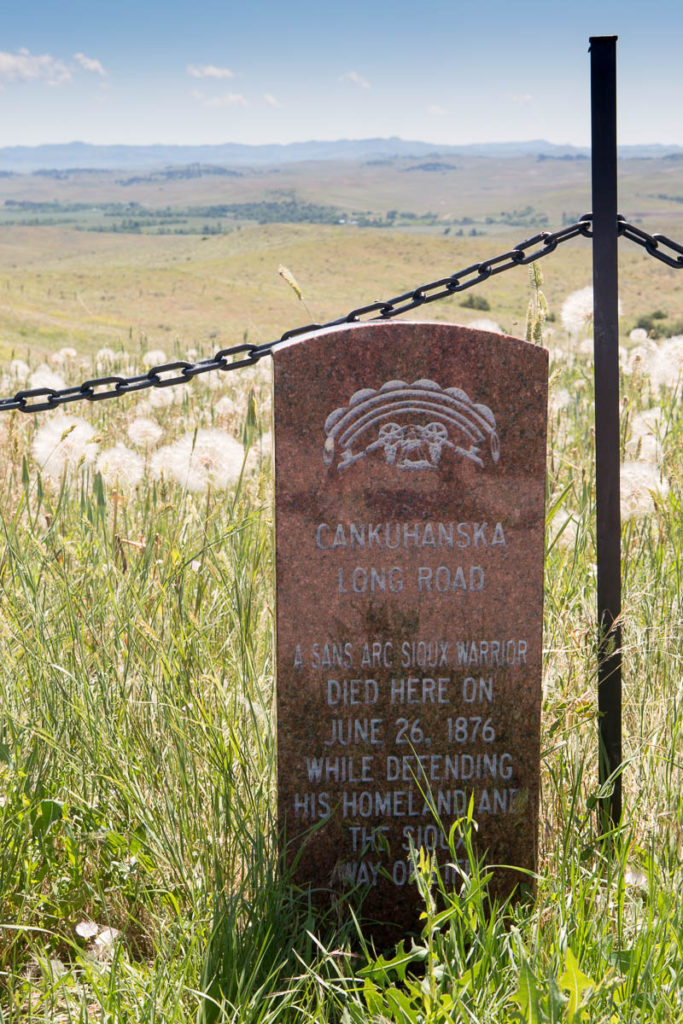
Long Road, Sioux Warrior
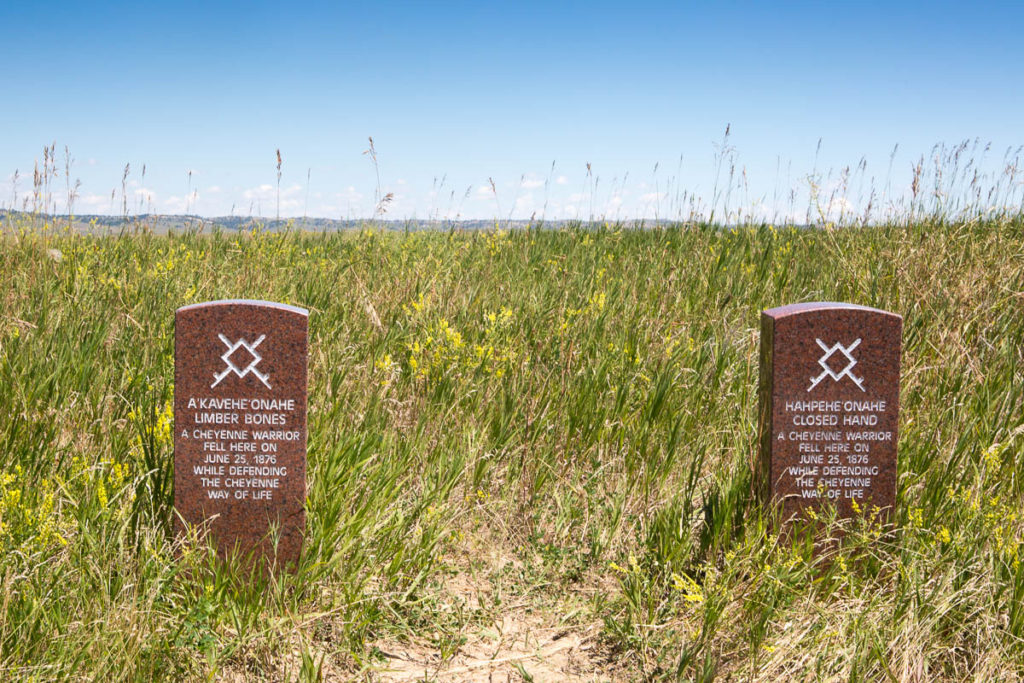
Limber Bones, Cheyenne Warrior; Closed Hand, Cheyenne Warrior
As we moved through the actual battle field, the stark white head stones stood in sharp contrast to brown landscape. I thought about the soldiers in their wool uniforms trying to find protection behind a few blades of grass on a day much like the day we were there. Hot, humid with unrelenting sun. Some soldiers managed to construct shallow ditches behind low berms. The 7th Calvary was not prepared to be attacked as they were filled with confidence of certain victory as they were led by the charismatic and popular General Custer.
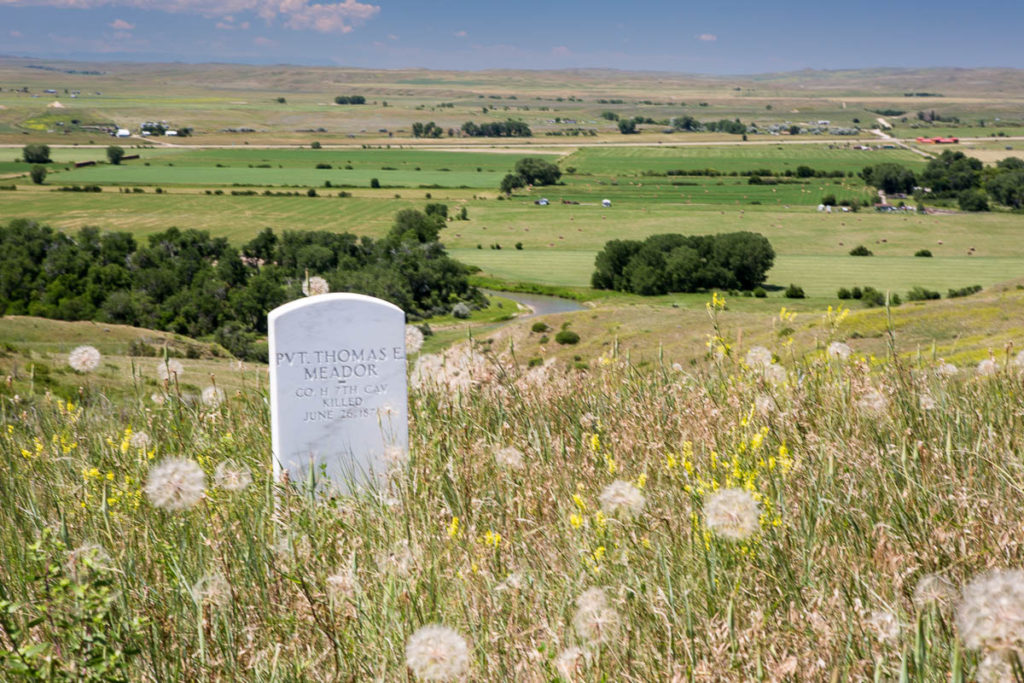
Pvt Thomas Meador
The battlefield is spread out about 5 to 6 miles along ridge lines above the Little Big Horn River. The clusters of white headstones mark the places where fights took place and the movement of the troops as they tried to find the best defensive positions.
There is an Indian Memorial, completed in 2013 and is close to the 7th Calvary monument.
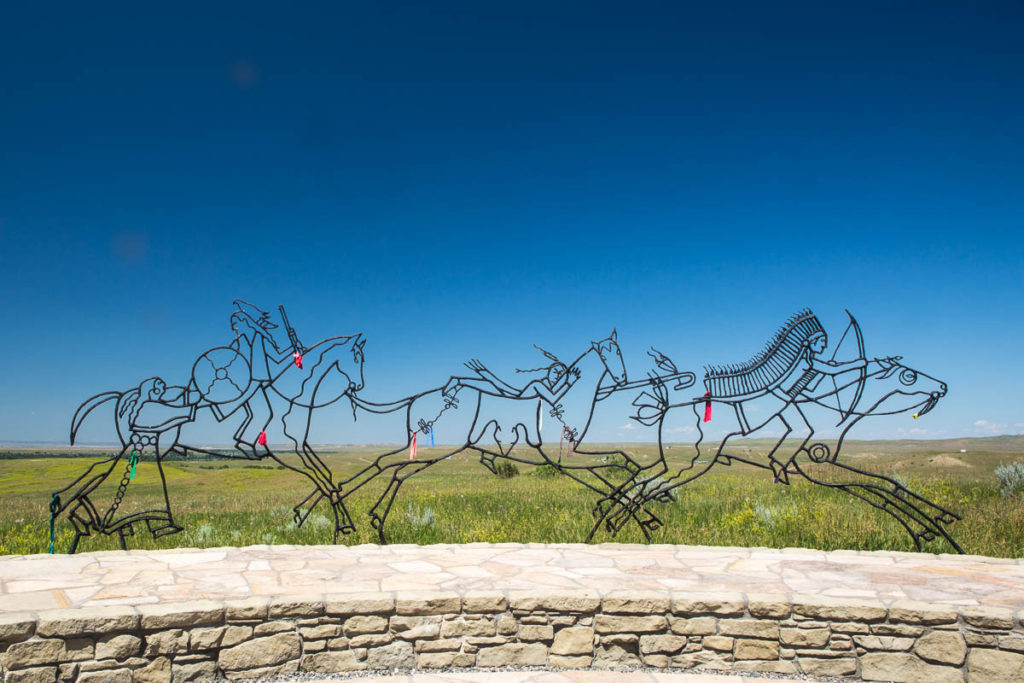
Something I did not remember from earlier visits is that this National Monument is also the location of the Custer National Cemetery. Service members from the 1800’s through Vietnam are buried here. This was the point where my emotions made it to the surface. The long rows of headstones, each marked with a person’s name, was very moving.
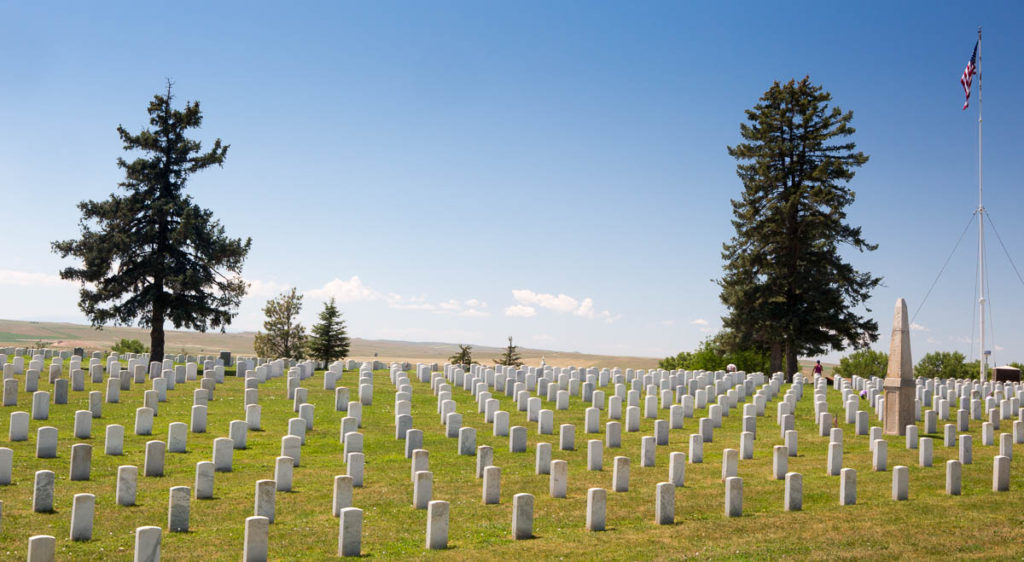
Dennis
7/23/18
Would like to add a footnote about the place we parked the rig. The 7th Ranch is about 8 or 9 miles from the entrance to the Monument. I learned it is a working ranch situated on a portion of the actual field of engagement. Was a little eerie when I realized that there was a good chance I was parked on the line of Reno’s retreat. To be followed closely by the Sioux. The 7th Ranch is very well maintained, sites are level but close as with all commercial parks. It is a Good Sam affiliate that I rate very high. Also, they give free ice-cream to every one in your party at check in. https://www.historicwest.com/




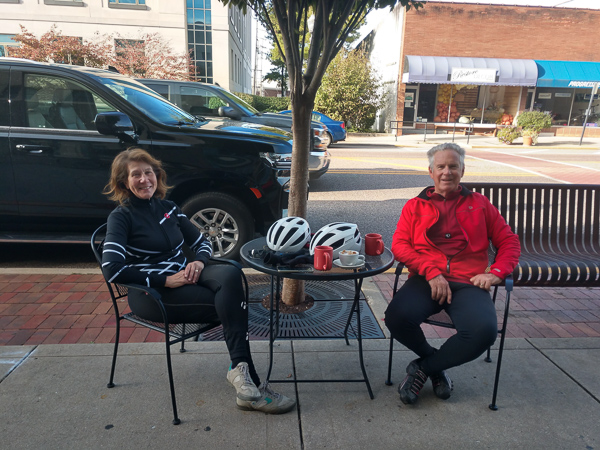
Beautiful. We were there a couple of years ago. Very sombering but beautiful. Love your story
Kim I was surprised how emotional I was. So sad that so many died on that prairie for whatever the reason.